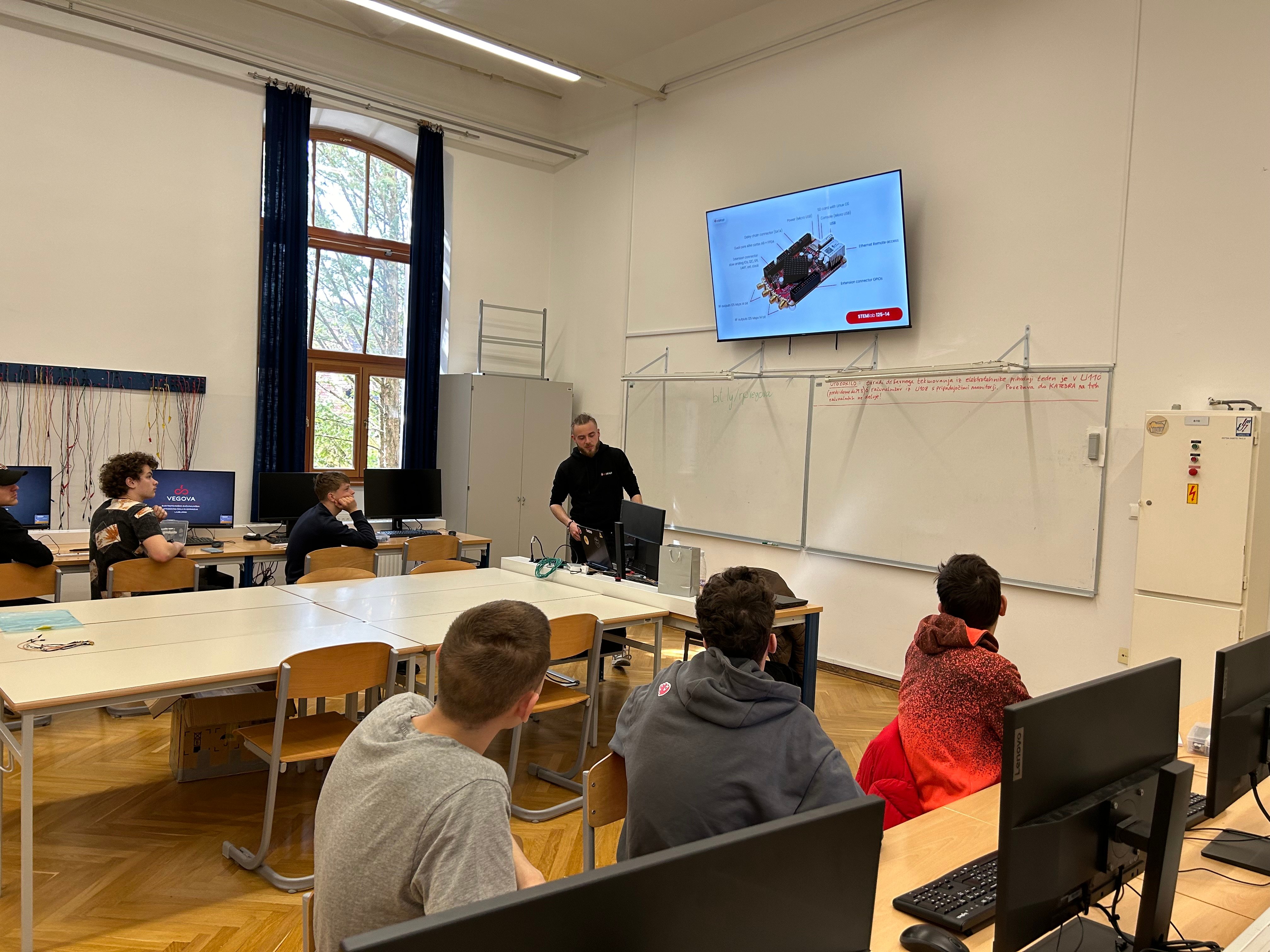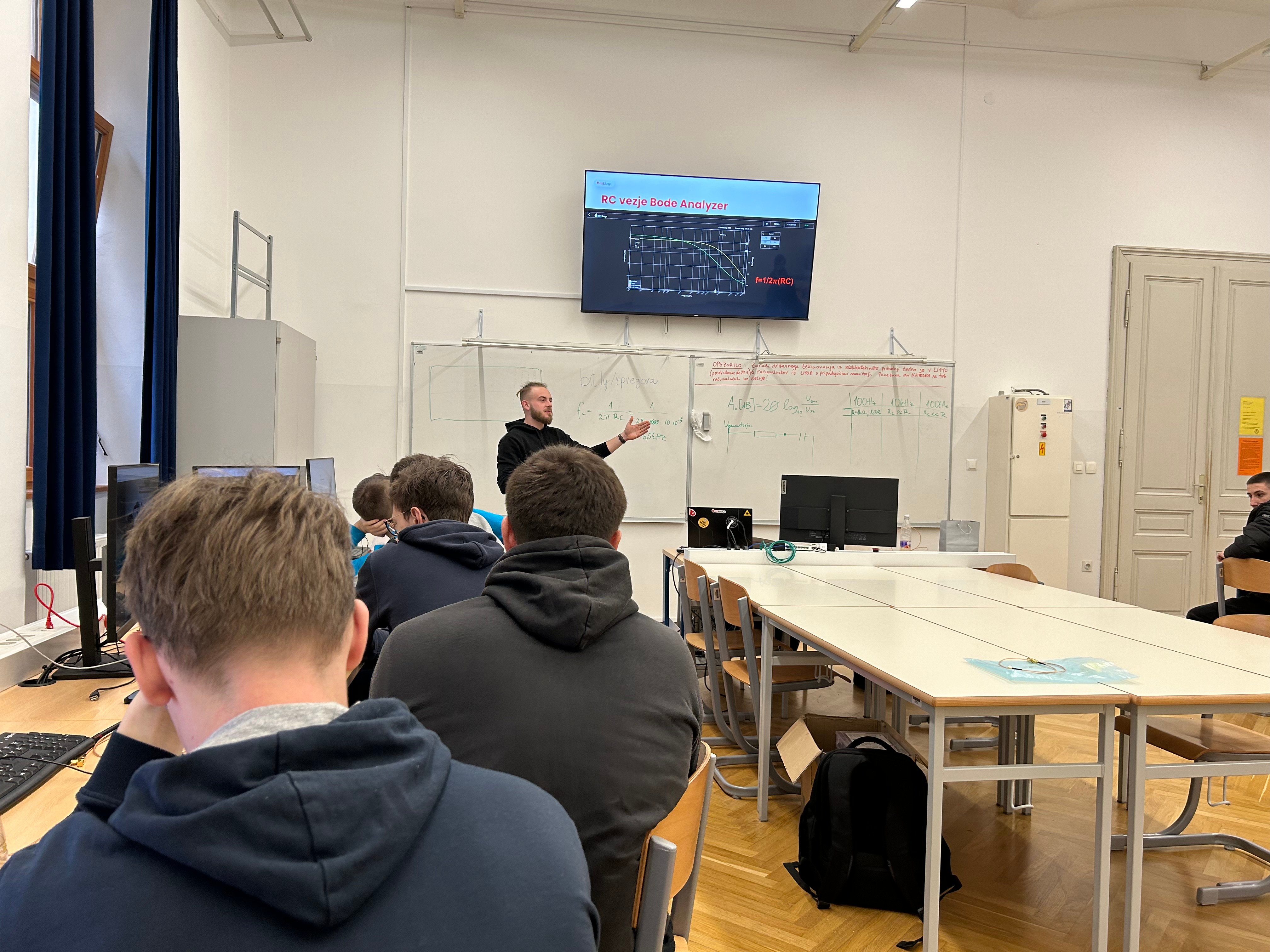RLC Circuits Workshop at Vegova High School with Red Pitaya
-
Posted by
 Red Pitaya Team
, March 29, 2024
Red Pitaya Team
, March 29, 2024

On Friday, March 22, we had the opportunity to visit Vegova High School in Ljubljana, where their commitment to cutting-edge electrical engineering education was once again highlighted. Hosting a dynamic workshop focusing on a Red Pitaya board, dubbed the Swiss Army Knife for engineers, Vegova High School provided second-year electrical engineering students with a hands-on introduction to the many applications of this versatile device. The workshop covered the fundamentals of electronic circuits through practical experiments with RLC circuits, while exploring concepts such as impedance, resonance, and phase shift.
Introducing Red Pitaya to the Students
The session introduced students to the Red Pitaya board, emphasizing its evolution from a specialized instrument used in research and industry to a versatile educational tool. Attendees were acquainted with its comprehensive features, such as its connectivity, an SD card hosting a Linux operating system, a robust architecture powered by a dual-core ARM cortex A9 alongside an FPGA and the RF inputs and outputs. This foundational knowledge laid the foundation for understanding how Red Pitaya functions in diverse scenarios, highlighting its adaptability and utility across a range of engineering tasks.

Showcasing Red Pitaya's Versatility Through Projects
Highlighting Red Pitaya's flexibility was a key part of the workshop, with an overview of its application in various projects. Notable mentions included its role in NASA's air quality monitoring system on the International Space Station and its use in groundbreaking student-led projects, such as creating a ground-penetrating radar system and developing an economical MRI device. These examples illustrated not just the tool's wide-ranging capabilities, but also its potential to motivate students to apply theoretical knowledge in real-world situations.
Bridging Theory and Practice
A presentation guided the participants through the workshop, blending theoretical concepts with practical demonstrations to create a dynamic and participatory learning environment. Starting with RLC circuit fundamentals, the session gradually introduced more complex uses of a Red Pitaya board in real-world applications.
Hands-on experiments were central to the workshop, encouraging students to apply their theoretical knowledge to using Red Pitaya for various purposes, including oscilloscope readings, signal generation, and Bode analysis. This approach reinforced their understanding of electronics and introduced them to practical aspects of modern engineering tools.

Deepening Knowledge with Notion
A special Notion page was set up for students interested in looking deeper into the workshop materials or pursuing experiments on their own. This resource offers exhaustive guides, further information, and additional learning materials, facilitating self-directed exploration and extended engagement with electrical engineering concepts outside the classroom.

Conclusion
These ongoing workshops at Vegova High School, featuring Red Pitaya, reflect a forward-thinking approach to teaching electrical engineering. By connecting theoretical learning with practical applications and promoting autonomous exploration through resources like Notion, the workshops not only enhance the educational journey but also prepare students for future challenges.
Incorporating versatile tools like Red Pitaya into educational programs is key to developing the next generation of engineers. By combining classroom learning with hands-on experiments and making comprehensive resources accessible, students are inspired to investigate, innovate, and contribute to the evolving field of electrical engineering.
About the Red Pitaya Team
The Red Pitaya editorial team consists of engineers, researchers, and product experts who develop and test cutting-edge open-source test & measurement solutions.
Our mission is to make advanced instrumentation accessible to everyone — from students and educators to leading research labs worldwide.



